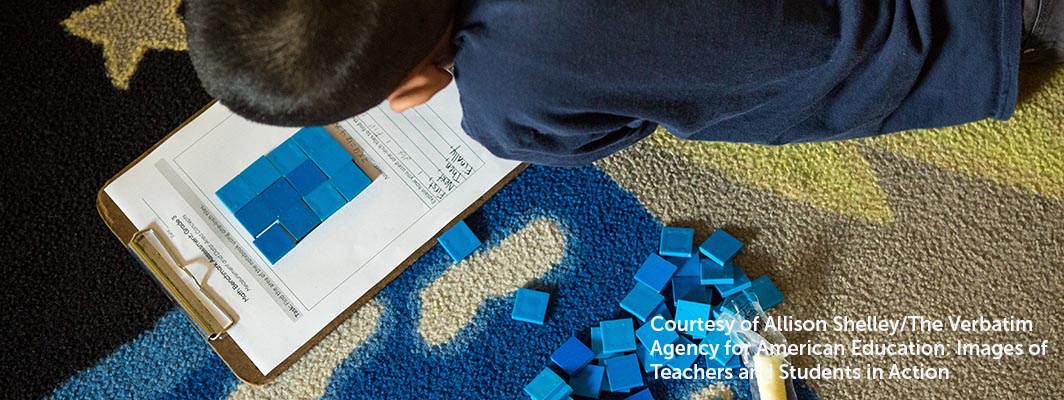
October 29, 2018 | By Alison R. Shell
Math anxiety is a specific type of anxiety associated with doing math that can negatively impact math performance, self-confidence, and motivation to participate in math. Research supports Ms. Cruz’s impression of students having greater math anxiety as they get older. When students experience math anxiety, their working memory resources are compromised, so they have difficulty keeping track of and working with information they need to use to solve math problems. Working memory is a key cognitive factor in math success and is increasingly needed as the numbers in math problems grow larger. There are many possible underlying causes for math anxiety, including the type of problems students are working on, students’ math ability, or students’ home and classroom experiences.
Parents have the opportunity to influence their children’s early math experiences. Their influence can be beneficial if they use math language in everyday contexts, such as talking about time, discussing measurements while baking, or engaging in math-related activities and games. On the other hand, parents can inadvertently transfer negative attitudes about math to their child. Research has found that parents who have math anxiety may unintentionally impart this fear of math on their children when helping them with their math homework. Indeed, Ms. Cruz said: “Often parents will try to help with math homework, but when they work with their child and don’t remember the skill, the child picks up on the parent’s frustration and brings that to the classroom.”
Research has shown that providing an engaging way for math-anxious parents to share math ideas and math talk with their children can help mitigate the effects of their math anxiety on children’s achievement. Students who engaged in math story activities with their parents as little as once a week showed improved math performance at the end of the school year.
Teachers’ math anxiety can also influence students’ self-confidence, math anxiety, and math performance. Elementary school teachers often lack confidence in teaching math and are math anxious themselves. As such, they may model fear around math, be inflexible in their teaching methods, or endorse gender stereotypes that can influence their students. Recent evidence has confirmed that high school math teachers can also have math anxiety. These math anxious teachers often display a fixed mindset in math; that is, the belief that intelligence is not something that can be readily changed, which in turn impacts students’ mindset and performance. To improve these math mindsets, there are strategies for teachers to model growth mindset and give growth mindset feedback so students learn that struggle and mistakes are normal parts of the math learning process.
Research-based strategies designed to reduce the pressure around assessments can help those students who often show increased anxiety on tests, where they underperform. Minimizing anxiety by giving untimed tests, for example, can free up students’ working memory needed to perform their best. Jessica Tucker, another veteran public school math teacher, has used this strategy and said, “Recently, I gave a student a math task untimed and then gave him the same task timed. He performed much worse on the latter assessment.” Another clever strategy by Ms. Cruz also can reduce pressure: “What I’ve done to help lessen math anxiety around tests is to give practice tests the day before, and use their score from the practice tests—they perform better on the practice test.”
Ultimately, the goal of these parent and teacher strategies is to help students re-frame their attitudes toward math and the process of learning math in order to lessen their anxiety around doing math. To learn more about the factors that affect students’ math development, explore the Learner Variability Project’s Math Grades PK-2 Learner Model and look for the Grades 3-6 and 7-9 models, which are coming soon. Both Ms. Cruz and Ms. Tucker supported the development of these models by highlighting research-based strategies that teachers can use.
By Jeremy Roschelle, John Whitmer and Peter Bull
By Adrianna S. and Kyrie F.